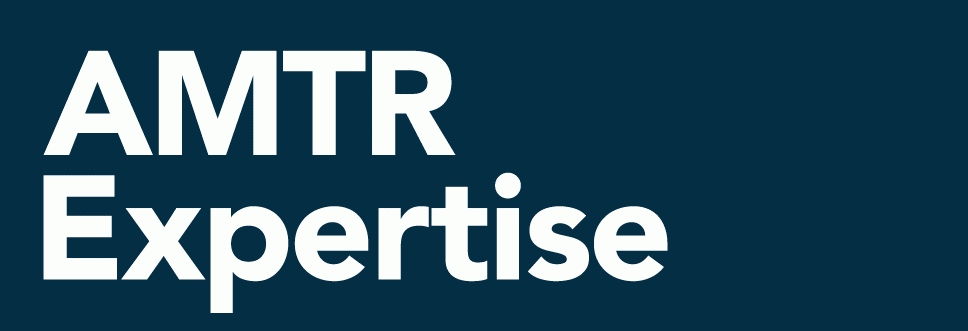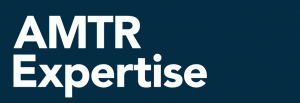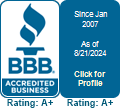AMTR rail expert, Genie Grooms, took the opportunity to speak to Surface Transportation Board (STB) representatives at the recent National Association of Rail Shippers conference to express shipper concerns from the AMTR vantage point. The issues she discussed included: 1) customer service as it applies to invoicing and correcting freight bills, 2) placing shippers on credit hold for refunds (although prepaid terms remain unchanged), and 3) rate reasonableness with respect to newly published mileage scale rates that have seen drastic increases. These are concerns that seem to be plaguing many shippers without any immediate remedy by carriers. AMTR was impressed at the STB representatives’ willingness to listen and their genuine desire for feedback. We encourage shippers to take advantage of any similar opportunities when presented. The STB can help address shippers’ key concerns, but only if it is made aware of them.

In May, members of AMTR attended the first-ever Transparency18 conference put on by FreightWaves and sponsored by the Blockchain in Transport Alliance (BiTA) and Georgia Tech. As the conference focus was blockchain technology, AMTR sent a multi-disciplined team to learn and get involved. Since AMTR’s audit work is focused at a unique intersection between shippers and carriers, we feel it is very important to be part of the evolution of this technology in the transportation industry. Niki Bolton (Truck Audits Manager) and Jim Sacrey (CTO) have since joined the BiTA Finance & Business Administration Think Tank where they will focus on smart contract applications, usable data structures, and the flow of freight billing, payment and auditing. The mission of the Think Tank is to create informative white papers regarding use cases and needs for blockchain, as well as to create prototype solutions, all with a focus on evolving transportation industry standards for blockchain.
AMTR has been on the road again, traveling to conferences across the U.S. One of our recent stops was at NITL2018 (National Industrial Transportation League), held in Dallas, Texas. At the conference, there was significant focus on trucking industry issues.
One of the biggest themes was capacity. Whether it was hours-of-service regulations (which are limiting driver times), the lack of truck parking availability (which is forcing drivers to stop short of their hours of available drive time), driver detention (which is reducing drive time due to loading and unloading delays), or delivery demands (more trucks making longer final-mile deliveries to residences), the impacts are generating a capacity crunch, which is of great concern to the industry and shippers alike.
Another hot topic was the Electronic Logging Device (ELD) mandate. A reflection on the European ELD implementation revealed a 16.6% reduction in miles driven, which is a significant impact. Furthermore, there is a concern about the cost of the ELD mandate, as well as the unintended impact on driver retention. If trucking companies cannot comply with the ELD mandate due to cost or other factors, they may be forced out of business.
Rising operational costs for carriers were also well-discussed. Besides complying with mandates such as ELD, the decaying state of highway infrastructure was highlighted as another considerable cost factor. As infrastructure ages, carriers are seeing more costs associated with repairs for damaged tires and equipment, and longer, more expensive routes generated by impassable roads and bridges.
Understanding more about these and other significant industry issues can allow shippers to be more prepared and proactive. Actions that strategize to allow drivers more drive time—such as quicker loading and unloading scenarios, informing carriers of any special equipment or service needs, and maintaining a consistent shipping schedule—will be important. Similarly, planning ahead for the increased costs of doing business will be essential for shippers and carriers alike.
Recent months have seen a number of announcements regarding significant leadership changes in the railroad industry. To begin, Ron Batory was sworn in as the Federal Railroad Administration’s 14th administrator on February 28th. Batory has had a long career in railroading, having come most recently from his position as COO at Conrail. Another announcement involves Canadian National President and CEO Luc Jobin, who resigned amid the backlogged Canadian grain crisis and was replaced in the interim by Jean-Jacques Ruest, a 22-year veteran and former CN Executive Vice President and CMO. Canadian Pacific is also bringing in a new player to the grain market by adding Joan Hardy—formerly of Canada’s largest agri-business, Richardson International—as Vice President of Sales and Marketing. Finally, CSXT lost CEO Hunter Harrison, who passed away unexpectedly in December 2017. There is no news as to whether Jim Foote, his replacement, will be the long-term choice to lead the CSXT into the future. Foote was previously President and CEO of Bright Rail Energy, a tech company whose products allow locomotives to run on natural gas power.
In addition to leadership changes, the railroads are working hard on various technological innovations. BNSF has joined BiTA, the Blockchain in Transport Alliance, and other railroads are sure to follow. Several railroads, including BNSF and NS, have recently rolled out new customer portals driven by upgraded technology to improve daily interactions. Finally, railroads are also developing new sensor and data-gathering technology, like UP’s “Machine Vision,” that will allow the inspection and weighing of cars—among other capabilities—without human intervention, speeding up transit times.
New leadership and new technologies often drive change in organizations and processes. With regard to the railroads, those changes can be very positive, but can often lend negative direct and indirect effects to the accuracy of freight billing. Over our 30 plus years in business, AMTR has eased clients through many times of change by providing continuity of transportation and operational knowledge.
For shippers, getting goods to customers in a timely manner is of critical importance. The process is often so time-constrained that a “ship first and ask questions later” approach may be used. Diversions, reconsignments, contract renewal delays or simply shipping to a new destination can create questionable billing. The problem is, however, that such questions are rarely revisited, as the demands of the day are unrelenting. Because of this, the resulting bills are often inaccurate, yet still paid, in order to keep processes moving.
At AMTR, looking back in time is part of our SMART Auditing® process. Carriers are usually quite accommodating and fair in cases where past billing was inaccurate. AMTR takes the time to ask our clients’ questions and have incorrect bills corrected long after they are paid. AMTR is always committed to finding every opportunity to ensure our clients pay the lowest possible rate for freight, even when it means looking back in time.
At AMTR, human knowledge plays a central role in our business model and defines our competitive advantage. As such, efforts to improve and challenge our minds are a key focus and always a strategic consideration. Recently, we added four employees to the ranks of Mensa, bringing the company total to five! Mensa describes itself as the largest and oldest high IQ society in the world. It is a non-profit organization open to people who score at the 98th percentile or higher on a standardized, supervised IQ or other approved intelligence test. AMTR is proud to announce its Mensa members:
Standing: Summer Bartczak (CEO), Devin Scott (Truck Auditor), Trey Clapsaddle (Truck Auditor)
Seated: Monika Bailey (Rail Auditor), Kelly Kirkpatrick (Assistant Truck Audits Manager)
This is just another reason to partner with AMTR. When we say we are the “Home of SMART Auditing®,” we are not kidding!

The year 2018 is near, and with it will come rate increases for some carriers. Shippers are paying premium prices for freight, as there are high volumes of shipments coupled with reduced capacity. These factors are causing an increase in rates for shippers and some new record highs for those in the transportation industry.
The spot market for reefer rates achieved a three-year high in mid-November, with an average rate of $2.40 per mile. In October, rates for mid-sized freight brokers hit a two-year high, netting a per-load profit of almost $62.00. Another two-year high was noted for revenue per employee in the transportation sector; it was reportedly 183% higher than in October 2016—all according to DAT.com. As of November, the national average for spot market van rates was well on its way to hit a three-year high.
In 2017, these record highs have been a result of increased rates for shippers. This is also true in the LTL market. Several of the larger LTL carriers took rate increases in mid-2017. Some of these carriers include ABF Freight (May), Estes Express (June), Oak Harbor Freight Lines (July), AAA Cooper (July) and Old Dominion Freight Lines (August). Two of the largest LTL competitors, FedEx Freight and UPS Freight, will be implementing 4.9% rate increases before 2018.
Prepare for the new year by knowing what increases are coming. It is believed that increases will continue in the spot rate market, in LTL carrier general rates and in fees within carriers’ rules tariffs.
Unnecessary repairs mean criminal fines for United Industries, the Progress Rail Services unit out of Long Beach. Federal investigators determined employees had chosen random cars for repairs in order to increase revenue, and later dumped the parts to conceal the evidence. United Industries has agreed to pay a $5 million fine after admitting to these criminal activities.
In other news, possible STB vacancies may lead to a lone member situation. Two seats were added in 2015; however, Chairman Dan Elliott resigned in September and Deb Miller’s term expires December 31. Should Miller vacate her seat in lieu of remaining for a holdover year, Ann Begeman would be the only member left until the White House fills the remaining seats.
The Federal Railroad Administration (FRA) is currently investigating the safety impacts of operating increasingly long freight trains on U.S. railroads. Due to a number of accidents and recent derailments, the FRA is increasing their inspections, and the Government Accountability Office will launch a study on the impacts of longer trains. CSX, in particular, has increased its train length by more than 400 feet since March 2017, when CEO, Hunter Harrison, came on board. The National Transportation Safety Board (NTSB) rail division head, David Bucher, told Reuters that “train lengths are increasing across the country. It is becoming more and more common, not just with CSX.” Currently, train length is unregulated and any likelihood of regulating it would face stiff opposition. “Longer trains maximize crews, locomotives, fuel and other resources,” said Union Pacific spokeswoman, Raquel Espinoza. The NTSB, FRA and STB do not collect data on train length, except for specific accidents or mediations.
Regardless of what is shipped or how many cars it takes, AMTR has seen problems not only in safety, but in the invoicing of product. Many shippers combine different commodities to build trains, and, in some cases, train contents may be intended for more than one consignee at the destination. Computers often take an “all or nothing” approach when assigning a rate to a train with a specific amount of cars. Some railroads offer over a dozen rates for different car contingencies, and others may draw a line in the sand with a minimum. Errors may occur on both sides of the EDI process, and all it takes is one mistake to incur a significant overcharge. A trained eye, combined with human logic, will catch this type of problem.
American Truck and Rail Audits, Inc. (AMTR) is proud to announce that it has joined the Blockchain in Transport Alliance.
“As a company that provides a service that sits at the intersection of both shipper and carrier data, we are excited to get in on the ground floor of the blockchain standards setting and adoption discussion. We can’t audit for our clients without integrating shipping, financial and product data. Any changes to how that data looks, flows, or is exchanged are of critical importance to us. We understand that blockchain technology is transformative. We want to be involved as the technology develops, and feel we have some unique expertise to offer to the standards development effort as well,” says AMTR CTO, Jim Sacrey.
A blockchain is a type of distributed ledger, comprised of unchangeable, digitally recorded data in packages called blocks. Each block is then “chained” to the next block, using a cryptographic signature. This allows blockchains to be used like a ledger, which can be shared and accessed by anyone with the appropriate permissions. The built-in security mechanisms of blockchain make it extremely difficult for hackers to compromise servers participating in the network where the distributed ledgers are stored.
BiTA will build the first set of transportation industry-specific blockchain standards by engaging with the brightest minds and the most influential leaders in transportation. BiTA standards are intended to create a common framework to help organizations develop and implement blockchain technology. For AMTR, partnering with BiTA is an exciting and strategic opportunity to be involved in the industry, to stay informed for our clients, and to evolve our own internal technologies, as well.









